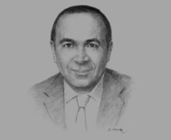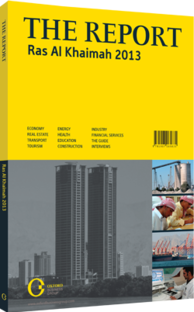OBG talks to Sanjay Hinduja, Chairman, Gulf Oil International

Interview: Sanjay Hinduja
Compared to other countries in the region, what are Ras Al Khaimah’s competitive advantages, as a manufacturing location for lubricants?
SANJAY HINDUJA: RAK’s greatest competitive advantage is the efficient decision-making mechanism it has in place. Additionally, the local authorities understand the needs of entrepreneurs who want to invest in the emirate. This includes things like allowing for affordable worker accommodations – for example – which is a big advantage over other emirates like Dubai, where accommodation costs have grown considerably over the past few years. Other advantages include the availability of land and the ease in arranging for work visas. These factors allow for investments to be made in a fast and easy manner. The level of support and fast decision-making ultimately encourages investors to come to this emirate.
So, we have decided to move forward with the establishment of our lubricant manufacturing plant through the newly formed company Gulf RAK Oil. Our experience with lubricants in RAK has been positive, and the group has identified areas such as information technology and real estate for future collaboration.
What are the prospects for public-private partnerships (PPPs) in the emirate? Do they offer attractive terms for the private sector partner?
HINDUJA: The PPP investment model is one of the many options for investment that exists in RAK today. There are others that might better fit the needs and requirements of each investor, such as the 100% ownership model. In any case, the terms that the PPP model offers to private investors are very favourable, and therefore there are numerous opportunities for any investor to come in and invest, not only in RAK’s growing industrial base, but also in other sectors of the economy.
The joint venture we currently have with Gulf RAK Oil is based on the PPP model. RAK authorities are our partners in this, and they have brought in a level of professionalism, expertise and professional conduct that has been very favourable to our investment. As with Ashok Leyland, the experience has been very positive, even more so than other parts of this region. This is a main reason we are considering investing in RAK’s real estate sector with the same model of investment.
What are the most significant potential obstacles to investing in RAK? Is the broader regional and global economic environment a concern?
HINDUJA: Certainly, the “Arab spring” is a matter of concern for investors in the broader region. However, the emirate provides the necessary political and economic stability that allows for safe investments to be made. This is something that other countries in the region also provide – Qatar, Kuwait or Saudi Arabia, for example. We are therefore quite optimistic at the moment about our investment strategy in RAK.
On a separate note, we also feel very positively about the relationship and trade developing between India and the UAE. In this respect, we have also seen a great flow of funds from the UAE to India, especially through investments in infrastructure projects.
Should manufacturers be concerned about the slowdown of the Chinese and Indian markets? Will this hamper emerging market growth?
HINDUJA: An entrepreneur has to look at the longterm. The Chinese and Indian markets are currently slowing down, but are doing so in the short-term. Eventually, both markets will bounce back, most likely in the next 12-18 months. The populations that China and India have today, together with the infrastructure requirements that both have, require an annual GDP growth rate of 8-9%. This will enable these countries to grow at a sustainable pace to reduce poverty, bring people to higher standards of living and avoid social problems that might arise in the long-term.
We remain confident that once this temporary slowdown is over, both China and India will grow again at a healthy pace and will continue to write the emerging markets success story over the next few years.
You have reached the limit of premium articles you can view for free.
Choose from the options below to purchase print or digital editions of our Reports. You can also purchase a website subscription giving you unlimited access to all of our Reports online for 12 months.
If you have already purchased this Report or have a website subscription, please login to continue.

